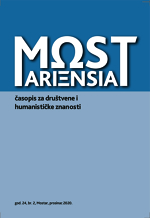CONGRUENT DUAL IN THE CHAKAVIAN LEGAL TEXTS FROM 16th UNTIL 18th CENTURY
CONGRUENT DUAL IN THE CHAKAVIAN LEGAL TEXTS FROM 16th UNTIL 18th CENTURY
Author(s): Boris KuzmićSubject(s): Cultural history, History of Law, Social history, Historical Linguistics, 16th Century, 17th Century, 18th Century
Published by: Sveučilište u Mostaru i Institut društvenih znanosti Ivo Pilar, Zagreb
Keywords: Dual; plural; Chakavian; law;
Summary/Abstract: The author observes the relationship between plural and dual in the framework of a special type, which determines the specific type of grammatical number to call congruent (lat. Congruere – be congruous) dual. Linguistic analysis is conducted on the corpus of Chakavian legal texts from 16th until 18th century and shows: in expressions with the numerical quantifier “dva” the dual of masculines is kept until the 18th century exclusively in the nominative and accusative case; plural forms in the nominative and accusative are exceptionally rare, in other cases, until the 18th century, only plural forms are realized; the pronouns, adjectives, and passive participles, which make the attributes of the attributive syntagms, are merely dual, except in one example from the 16th century where the substitutive attribute gets a plural suffix. In expressions with the numerical quantifier “oba (dva)” the dual in the masculines preserves up to the 18th century in the nominative, genitive, accusative and instrumental. In other cases the plural forms are realized. The pronouns, adjectives and passive participles, which make the attributes in the nominative and accusative attributive syntagm, have the dual form.
Journal: Mostariensia - časopis za društvene i humanističke znanosti
- Issue Year: 24/2020
- Issue No: 2
- Page Range: 33-53
- Page Count: 21
- Language: English

